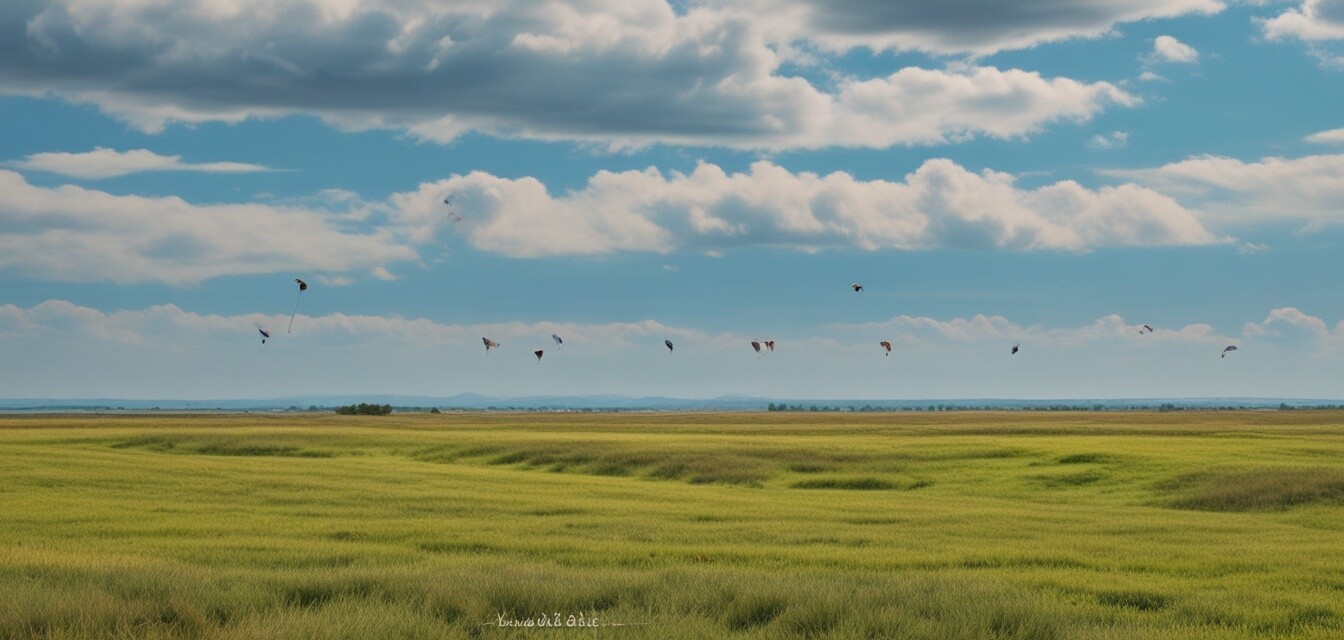
How to choose the right location for kite flying
Key Takeaways
- Opt for open spaces away from obstacles like trees and buildings.
- Consider wind direction and speed for optimal flying conditions.
- Be aware of environmental conditions like weather changes and restricted areas.
- Check local regulations regarding kite flying in public spaces.
- Ideal locations include parks, beaches, and open fields.
Kite flying is a delightful outdoor activity that combines fun with some level of skill. Choosing the right location is crucial to ensure an enjoyable experience. Factors such as wind direction, the presence of obstacles, and overall environmental conditions need to be considered. This guide aims to help you select the perfect kite-flying spot so that you can maximize your time outdoors.
Why location matters
The location you choose for kite flying can significantly affect your experience. A suitable spot not only enhances your enjoyment but also makes it easier to control your kite. Below, we’ll delve into essential factors to keep in mind.
Wind direction and speed
Understanding wind patterns is crucial. Wind direction affects how your kite flies and how easy it is to launch. Generally, here are some wind conditions to consider:
| Wind Speed | Condition | Remarks |
|---|---|---|
| Calm (less than 5 mph) | Not suitable | Kites may not lift off the ground. |
| Light Breeze (5-10 mph) | Good for beginners | Great for smaller kites. |
| Moderate (10-15 mph) | Ideal for experienced flyers | Best for larger kites; allows for good performance. |
| Strong Wind (15+ mph) | Risky | Can damage kites or make them difficult to control. |
Look for open spaces
Choose areas with wide-open spaces free from any obstacles like trees, tall buildings, or power lines. Below are ideal locations to consider:
- Parks: These often have large, grassy areas perfect for flying kites.
- Beaches: The open expanse of sand and water creates perfect conditions for kite flying.
- Meadows: Open fields away from urban areas can offer great wind conditions.
- Hills: Flying from a hilltop can leverage natural wind currents.
Environmental conditions
Checking the weather before heading out is essential. Light rain or extreme heat can make kite flying uncomfortable. Here are some considerations:
Tips for checking environmental conditions:
- Look for clear skies without rain.
- Check weather forecasts for sudden wind changes.
- Avoid areas with heavy foot traffic or wildlife.
Safety and regulations
It's also essential to abide by local regulations regarding kite flying. Be aware of:
- Recreational park rules.
- Airspace restrictions near airports.
- Local guidelines on kite size and type to use.
Conclusion
Choosing the right location for kite flying can significantly impact your enjoyment of the activity. Always consider factors such as wind conditions, open spaces, and local regulations to choose wisely. Armed with these tips, you’ll be able to soar high with your kite and create lasting memories outdoors!
Pros
- Improved control when flying kites.
- Increased safety from obstacles.
- Better overall flying experience.
- Potential for creative kite tricks and stunts.
Cons
- Inaccessible areas can limit options.
- Weather changes can disrupt plans.
- Local regulations may restrict flying in some areas.
- Open spaces can sometimes be crowded.
For further reading, check out our Buying Guides to ensure you have the right kite and accessories before heading out, or visit our Kite Accessories page for all your needful items. You can also explore News and Trends for updated kite flying events!